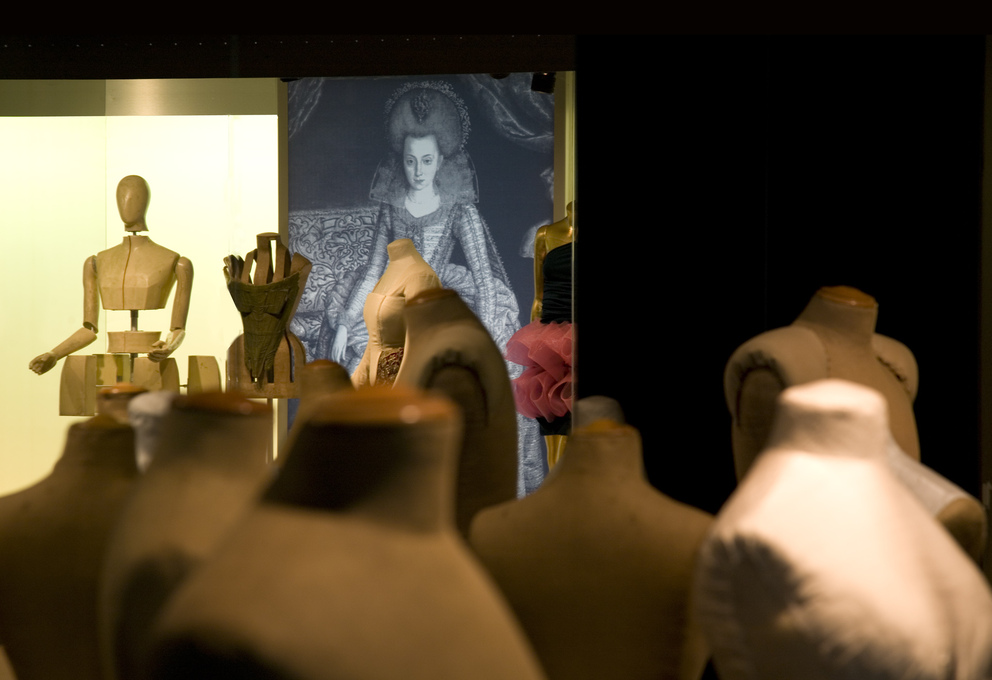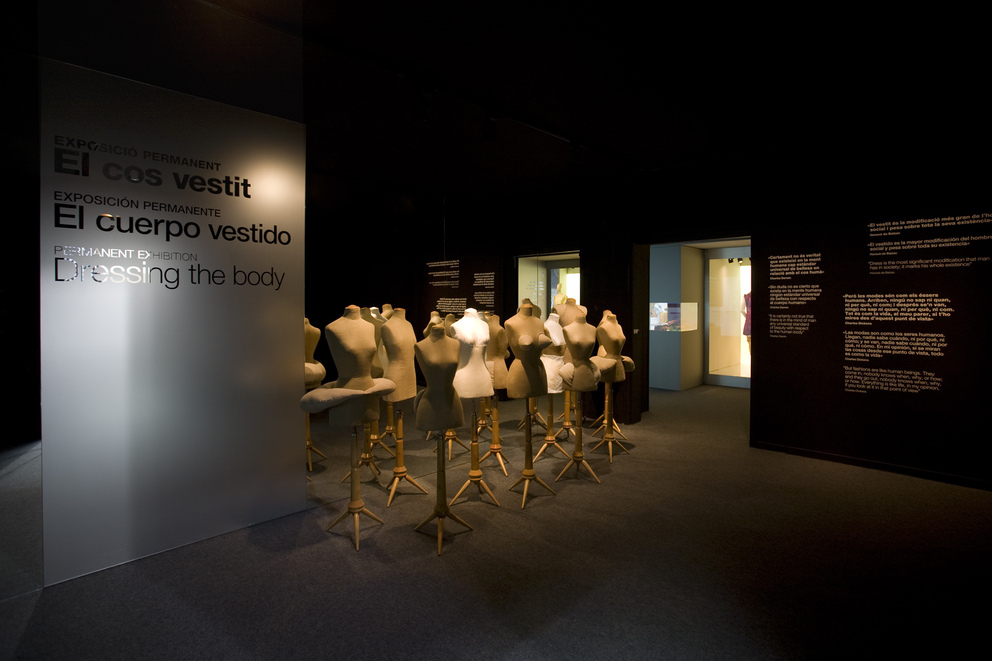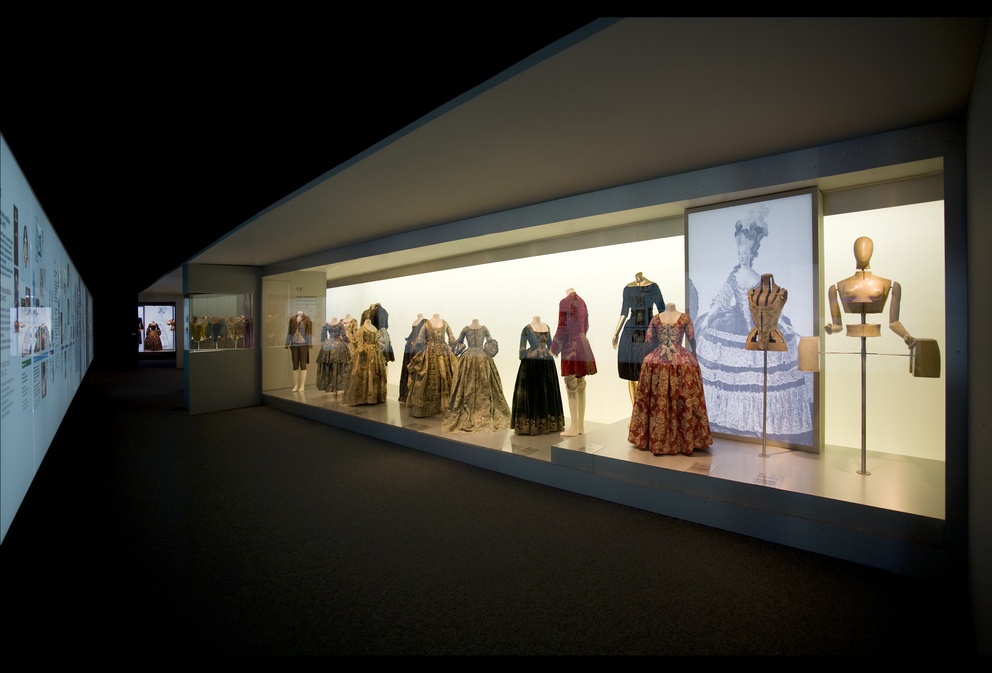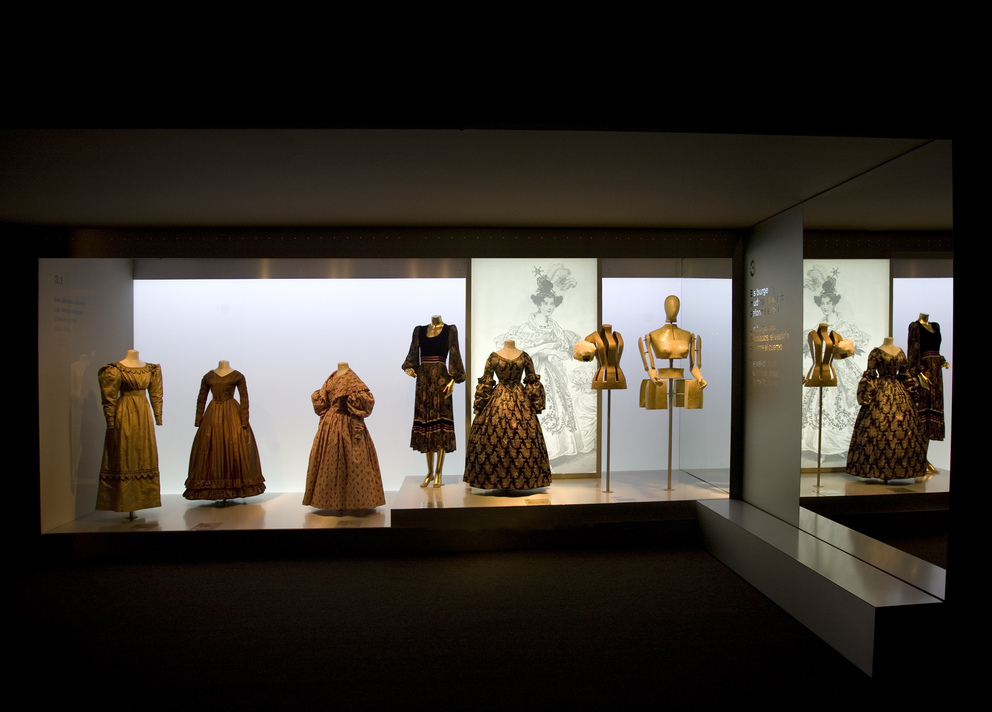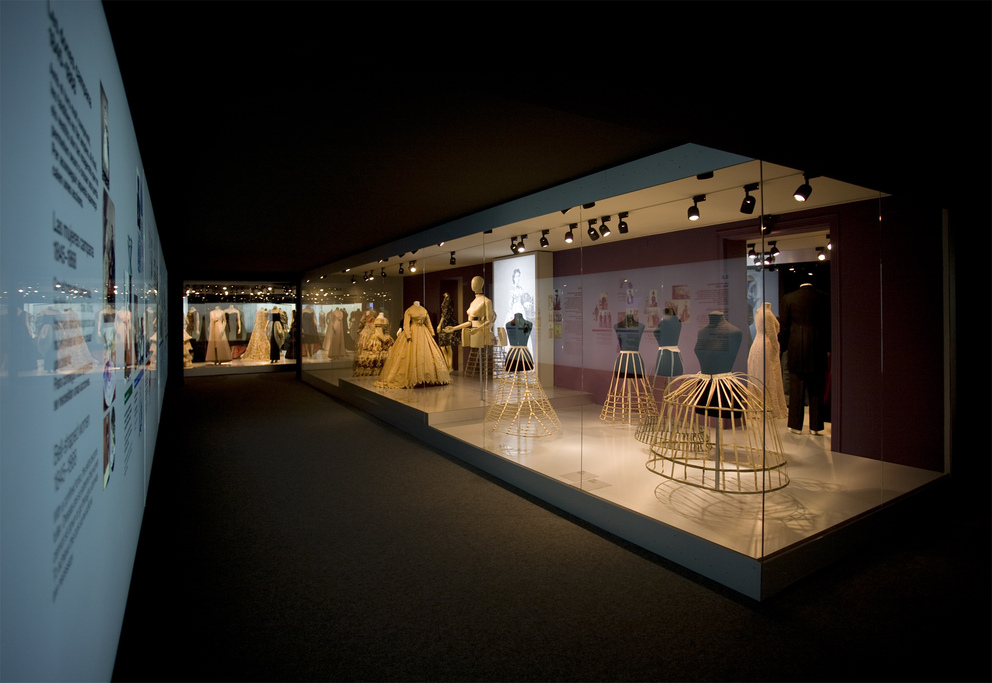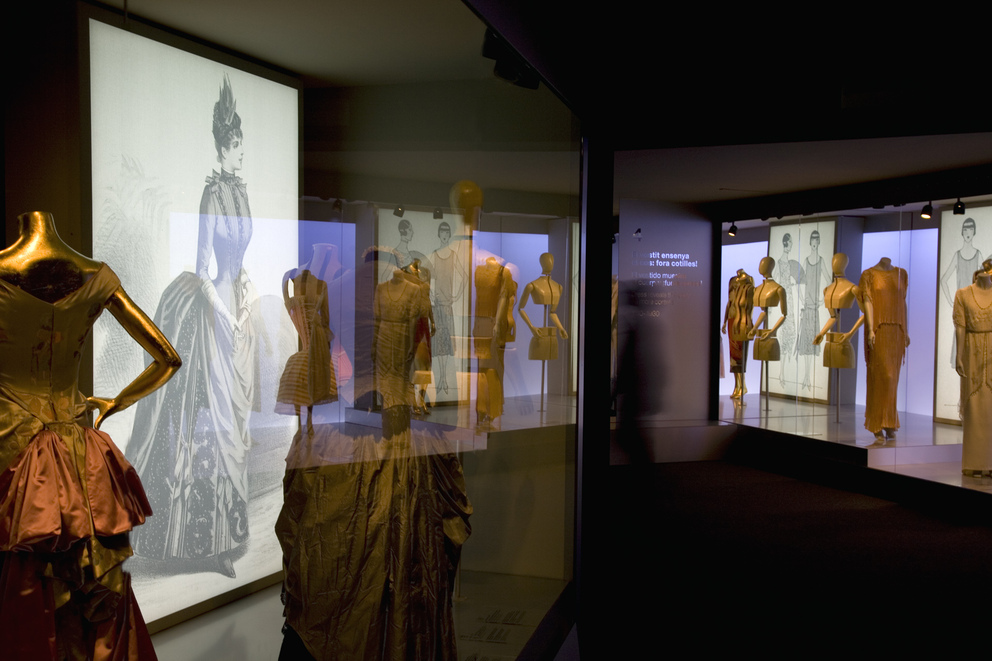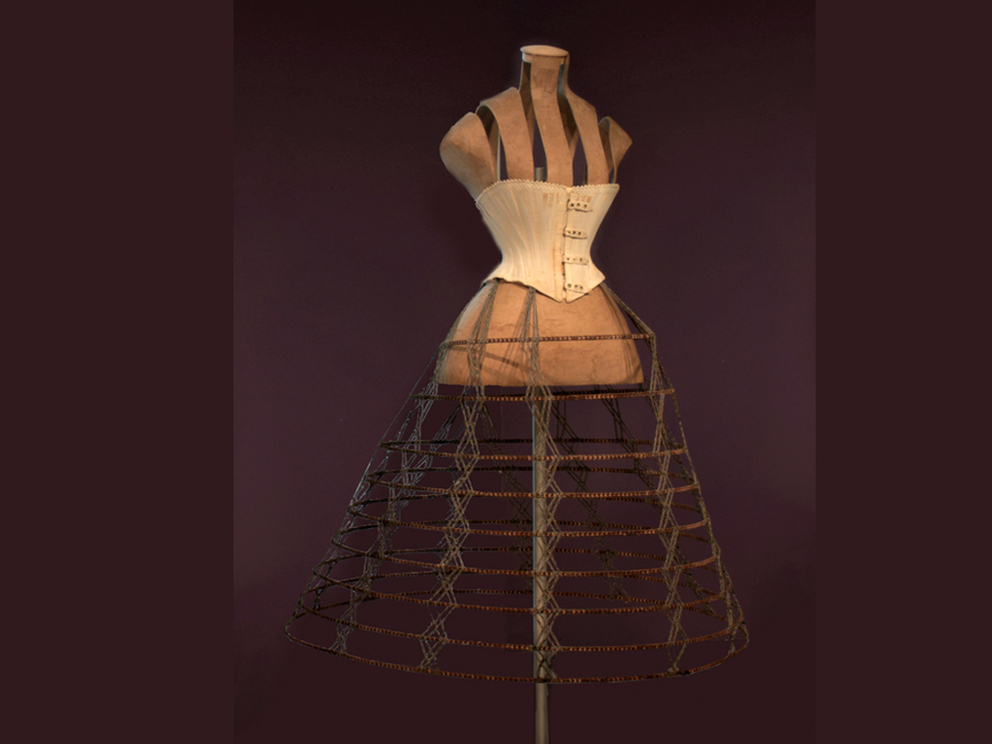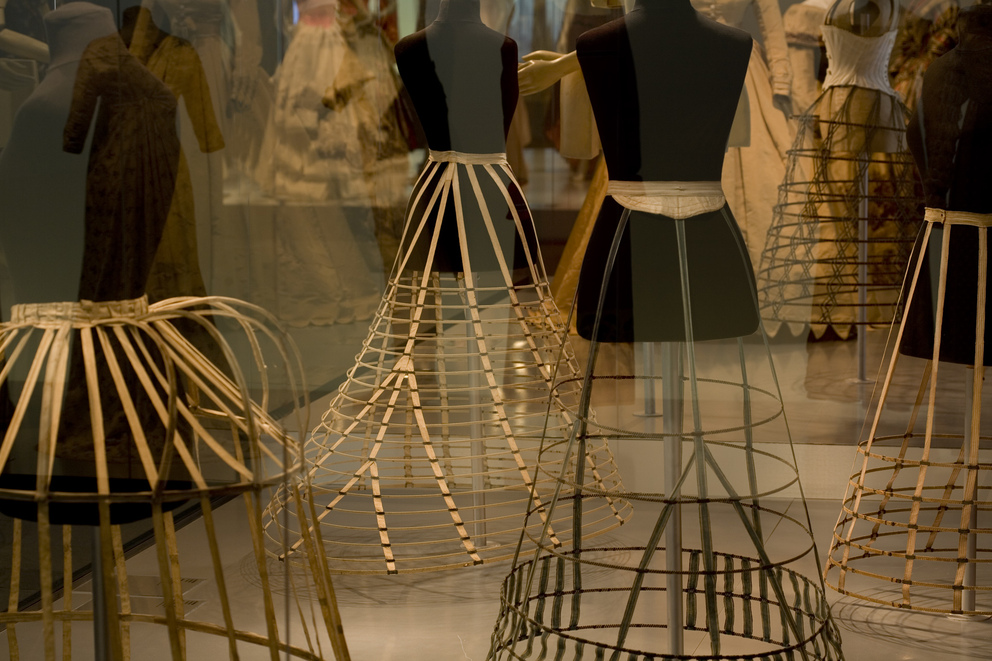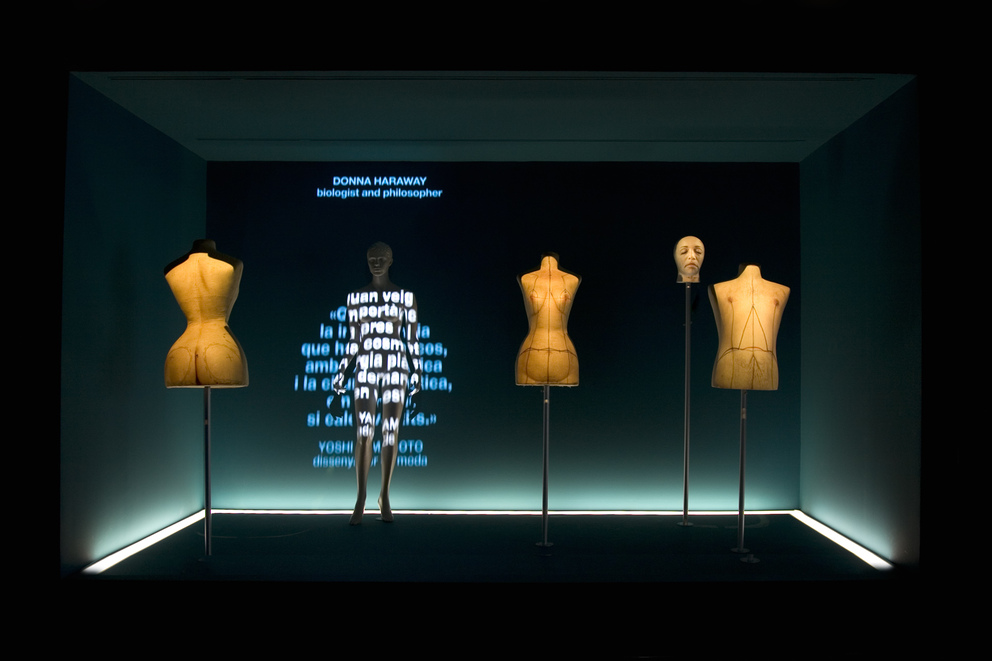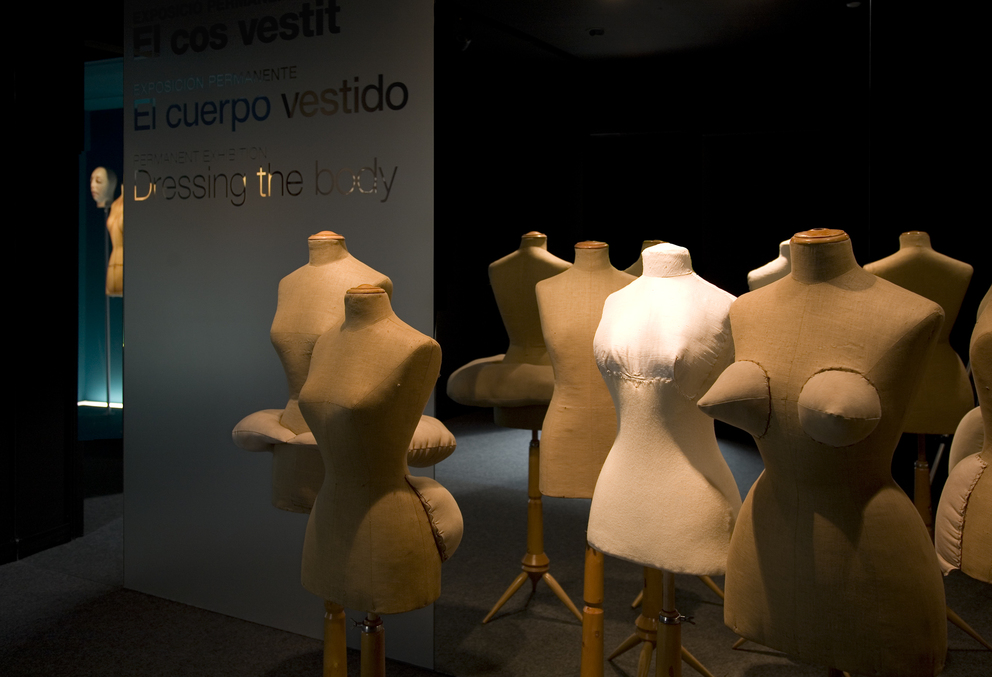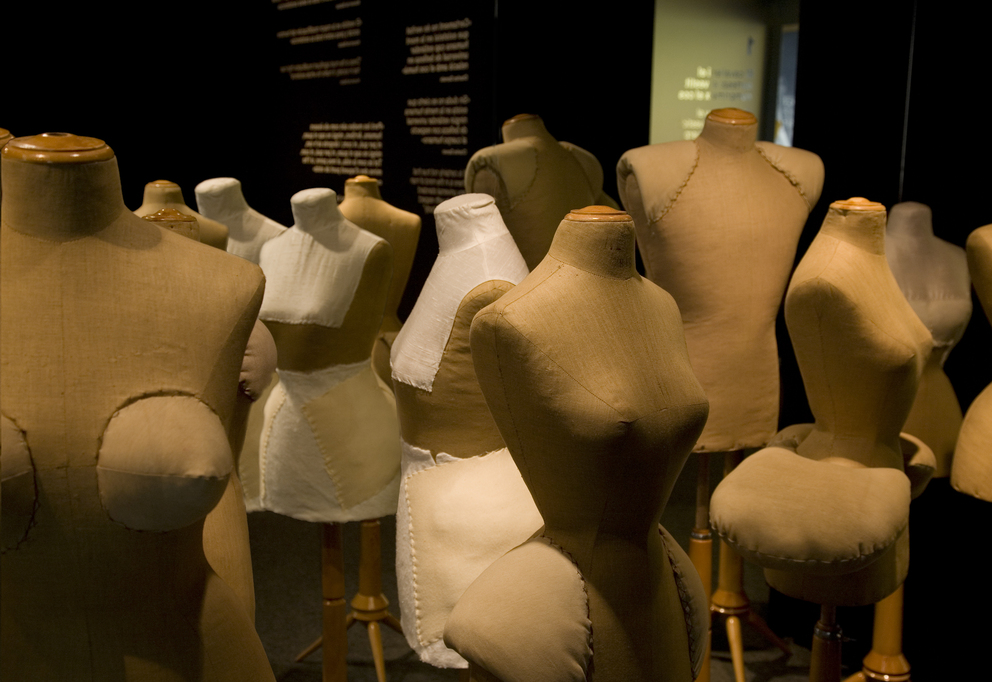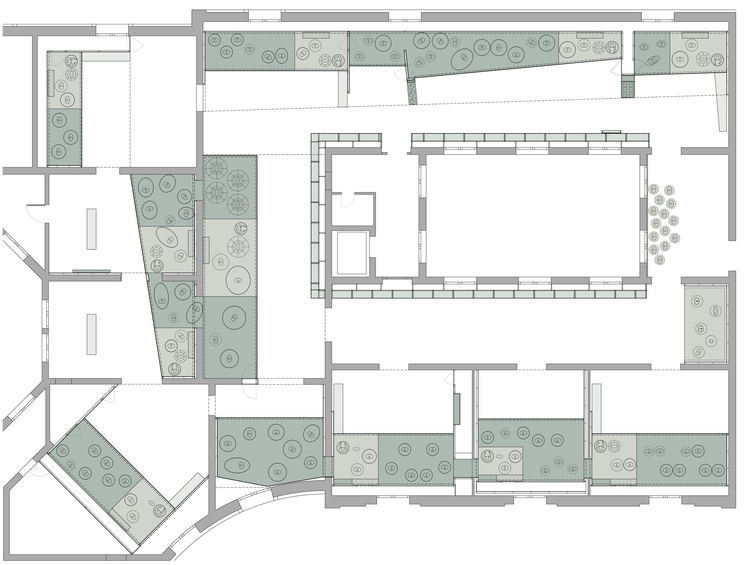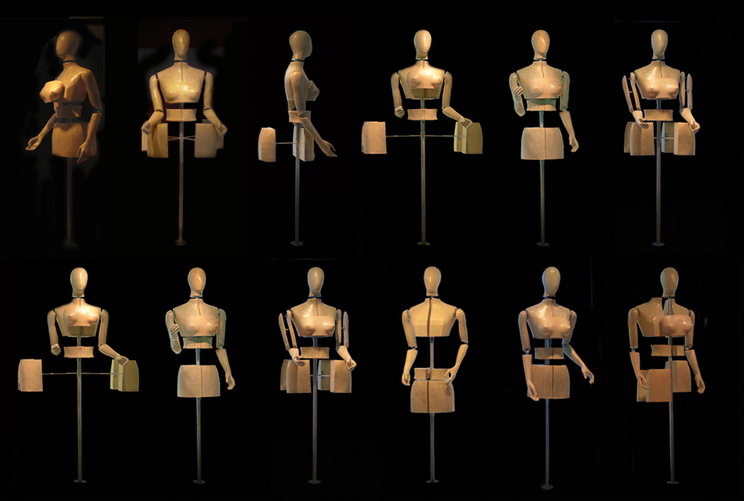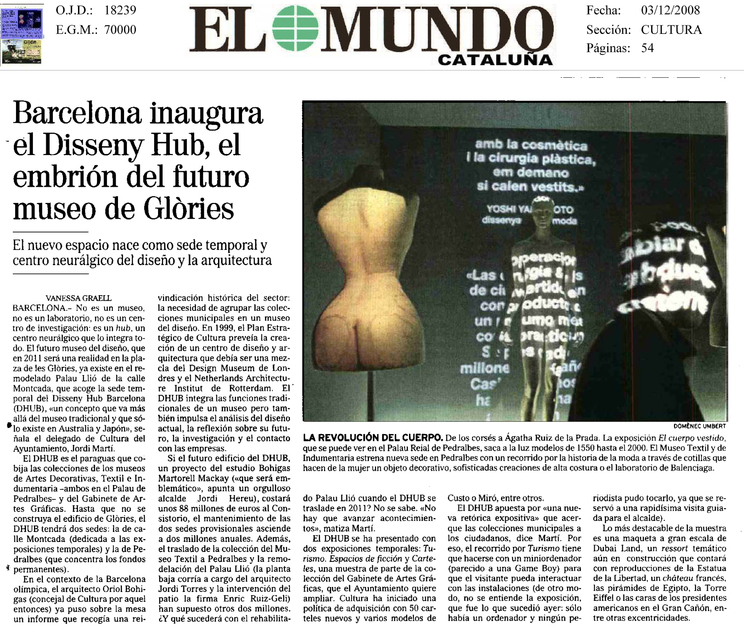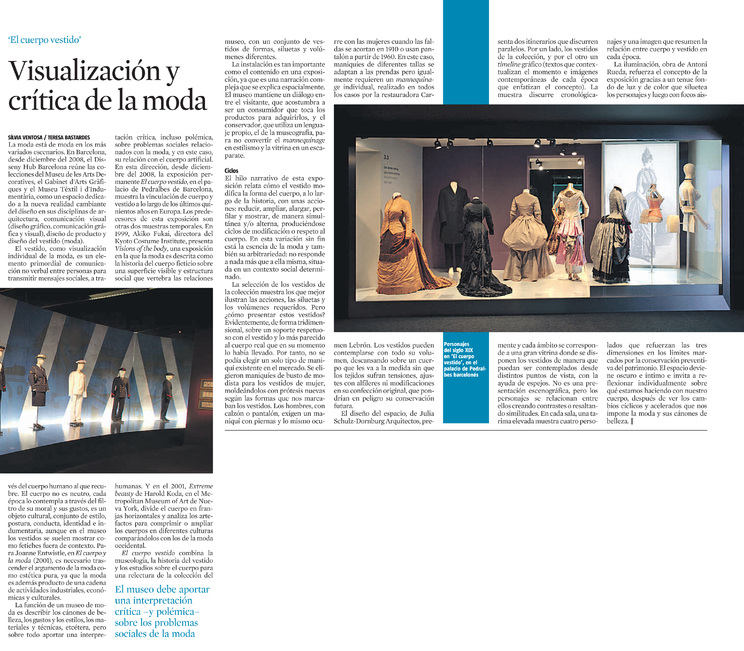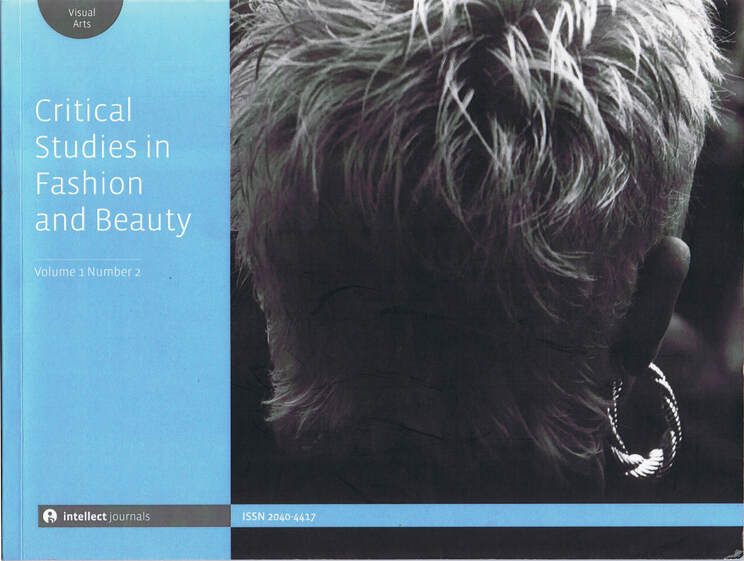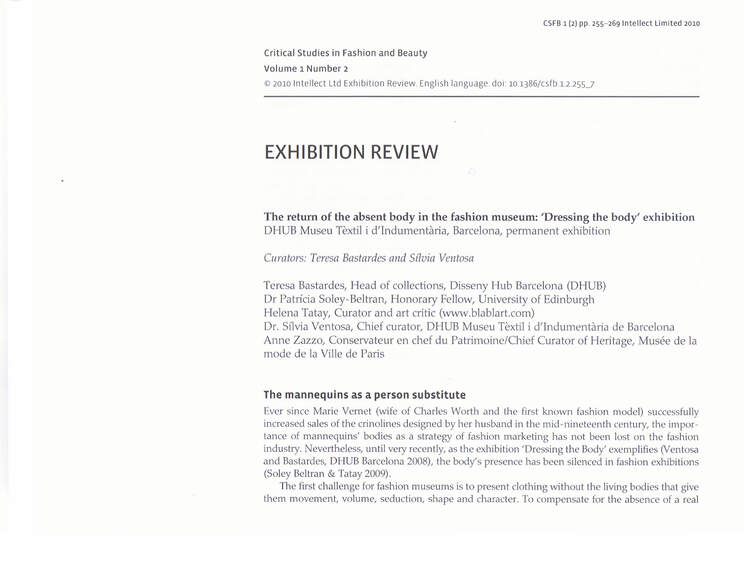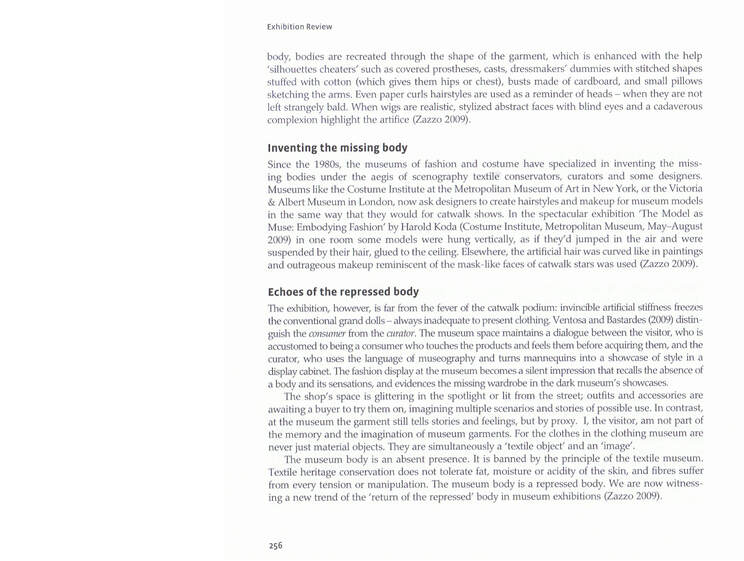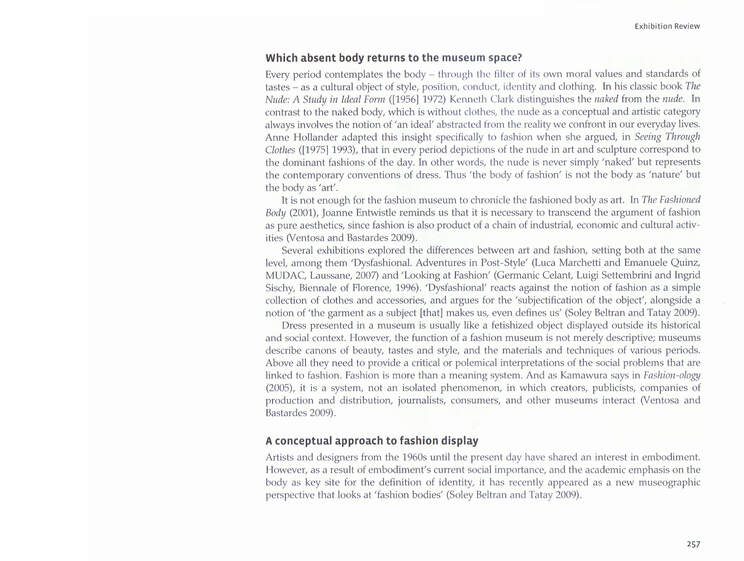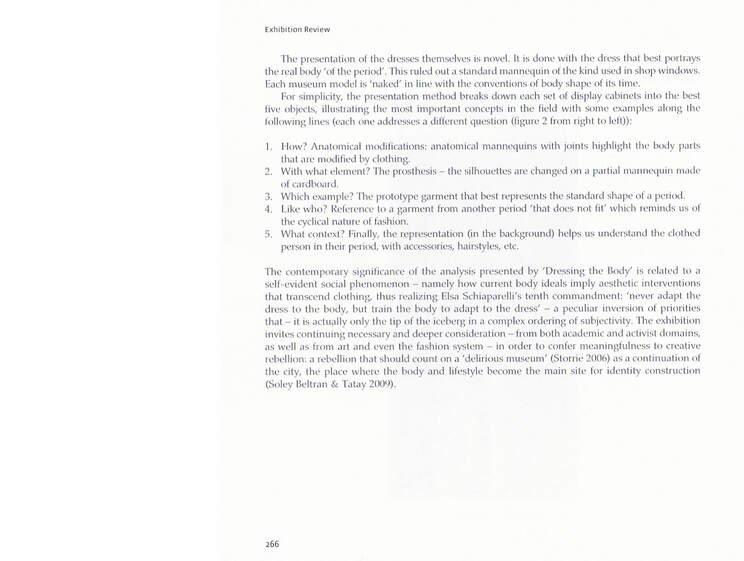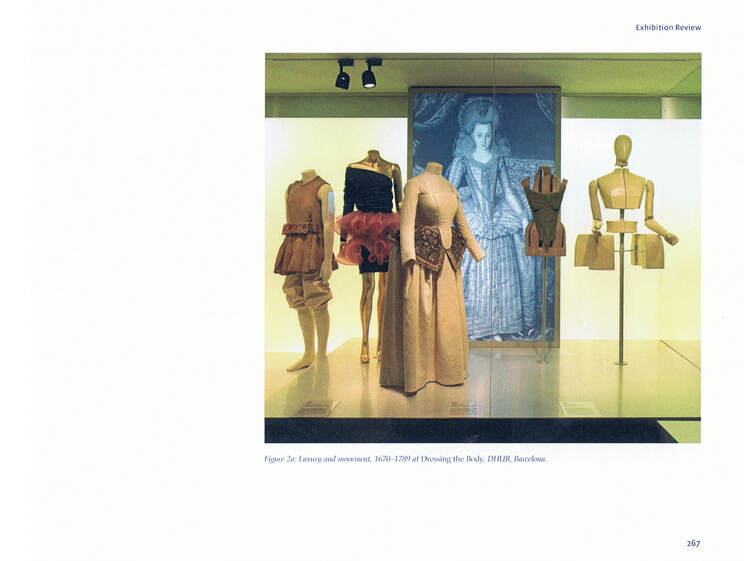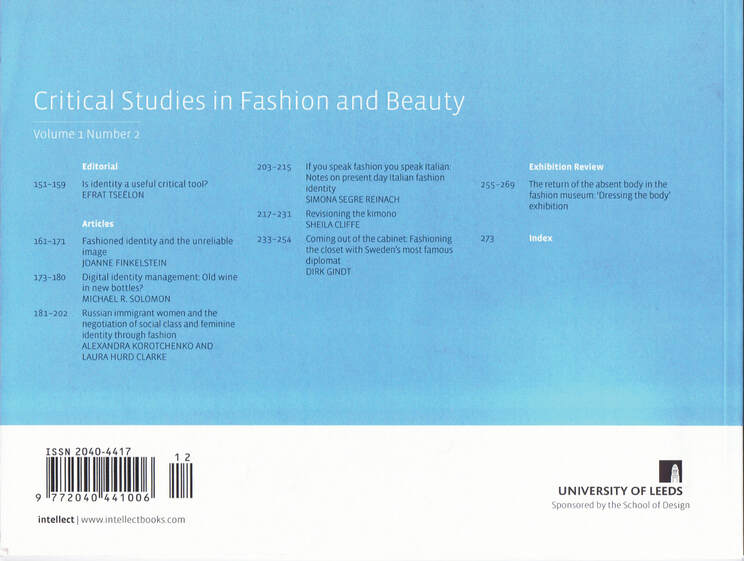El Cos Vestit. Museu de les Arts Decoratives,
Palau de Pedralbes, Barcelona
A mayor part of the Textile Museum collection has been modernized and relocated in the Pedralbes Palace, using contemporary exhibition techniques. The presentation of the collection exemplifies one of the possible ways to integrate great heritage funds using modern exhibition methods to fuse historical testimony with critical present-day interpretation.
The fashion exhibit combines conceptual and graphic representation as well as objects and textiles. The concept of the re-edition of the Museum’s textile fund is to show how much and for how long fashion has imprinted physical transformations on the human body be it with restrictive corsets combined with expansive crinolines or with surgical implants and other alterations in plastic surgery.
The exhibition investigates the historic sequence of western dress code and its related anatomical modifications. It exemplifies, with a series of mannequins designed specifically for this occasion, what type of metamorphosis the human body has undergone in the last 500 years and with which methods this desired effect has been obtained.
Each of the chronologically organised chapters begin with the same group of personalities that explain the aesthetic guidelines and ideal of the period. The anatomical mannequin represents the proportional alteration of the human body. Its counter player, the structural mannequin, demonstrates manners and means to achieve this desired result. A gilded mannequin in contemporary clothes updates the historical vision and underlines the cyclical nature of beauty standards. The central position, close to the historical portrait with its integral version of the desired transformation, is occupied by one of the collection’s showpieces that sums up the spirit of the époque.
The changing silhouettes of the bodies are highlighted by the luminous backdrop of the display cabinets. Subtle colour shifts in each unit help to identify the chronological sequence of dress and body styles. Maximum transparency in the design of the showcases helps to interconnect the fragmented museum space and to create a stimulating itinerary with unsuspected reflections, mirrored figures and overlapping perspectives. A continuous band of light with the exhibition’s narrative surrounds the central patio of the museum and accompanies the visitor throughout the show.
Press Review
Credits
Project: Exhibition ”The Dressed Body”
Location: Museum of Decorative Arts, Barcelona
Date: 2008
Author: Julia Schulz-Dornburg
Collaborators: Eugenia Troncoso
Client: Institut de Cultura de Barcelona (ICUB), Design Hub Barcelona (DHUB)
Curator:Teresa Bastardes i Sílvia Ventosa
Coordination: Carmina Borbonet
Lighting design: Toni Rueda
Graphic design: La Vista
Construction: Grop SA
Photography: Pau Esculies


